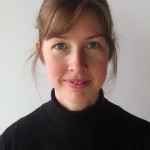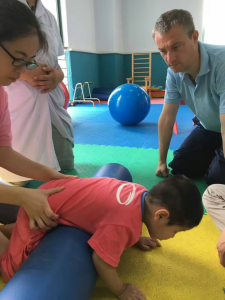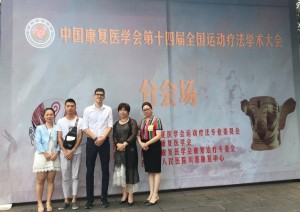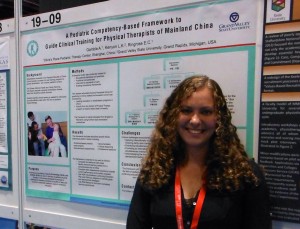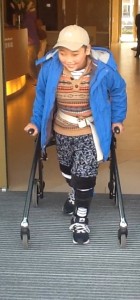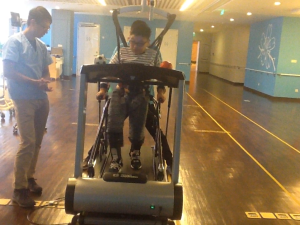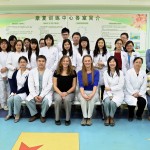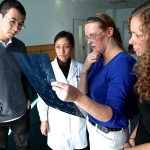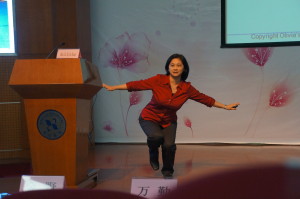Due increased muscle spasticity, children with cerebral palsy (CP) often develop muscle contractures (shortening) and skeletal malalignment (where bones grow at a slightly abnormal angle or hip joints do not form properly). These can affect the functional abilities of a child. For example, because they are unable to straighten their knees fully they have difficulty balancing on one leg and kicking a ball. Or because their hips and knees are unable to straighten fully they can only walk slowly and with difficulty. Usually these challenges can be addressed by physical therapy through specific exercises and activities. However, it is sometimes decided that further intervention is needed if these contractures and malalignments are too significant to be treated just by physical therapy. The first step to consider is conservative treatment such as Botox. However, at times, surgery is necessary to help correct the muscles and/or bony structure.
Orthopedic surgery should not be decided upon lightly and is a decision best informed with the most amount of information possible. Firstly, the desired outcome of the surgery should be considered. Functional information should also be taken into account; what can’t the child do now that he/she wants to do and will surgery help? Are the child and the family willing to undertake the short-term discomfort of surgery and challenge of extra therapy for a long-term gain? Finally, detailed information about the child’s biomechanics (how they move) should be gathered to aid the decision of whether to proceed with surgery, but also, exactly what surgery to do. This information can be gathered by the child’s physical therapist – length of muscles, strength of muscles, and functional skills using compensatory movements. It can also be gathered through a formal gait (walking) analysis which looks in more detail at the action of walking. From this information, conclusions can be drawn that give more detail about how muscles are working and where the strengths and weaknesses are. Gait analysis is best done in a gait lab with specialist equipment; however, there are also now apps for rehabilitation professionals that can be used on iPads and tablets. Physical therapists (PT) are also trained to analyze movement by observation. Gait analysis both in a formal lab setting and through observation by the PT aims to gather information not just about what movements a child can do but how the child does those movements.
Regardless of the amount of information collected prior to surgery, the outcome of orthopedic surgery for children with cerebral palsy is still not always predictable. Some children respond very well and their function is greatly improved. Others can have little if any improvement which is disappointing for both the child and family given the effort that is put in for the surgery and recovery. Recently, a new piece of equipment has been developed to add even more detail to the information that can be collected and used during the decision making process. It is able to analyze the ‘how’ of movement in even more depth.
 ‘Walk-DMC’ (DMC meaning Dynamic Motor Control) uses electromyography (EMG). Electrodes are placed on the skin over the muscle groups that need to be analyzed and feedback detailed information not just about whether the muscles are working but also when and how much. Comparing the information collected to a ‘typical’ set of information, it can determine the level of muscle control. This can then inform what surgery would be beneficial and which would not. Through collecting data from over 400 children before and after orthopedic surgery, it has been found that those with better muscle control have better outcomes following surgery. With the information collected from Walk-DMC, a child’s team can have this information prior to surgery to help in the decision making process.
‘Walk-DMC’ (DMC meaning Dynamic Motor Control) uses electromyography (EMG). Electrodes are placed on the skin over the muscle groups that need to be analyzed and feedback detailed information not just about whether the muscles are working but also when and how much. Comparing the information collected to a ‘typical’ set of information, it can determine the level of muscle control. This can then inform what surgery would be beneficial and which would not. Through collecting data from over 400 children before and after orthopedic surgery, it has been found that those with better muscle control have better outcomes following surgery. With the information collected from Walk-DMC, a child’s team can have this information prior to surgery to help in the decision making process.
This technological development to help clinical decisions has much potential. Researchers plan to collect more information to help with more objective decision making for different types of orthopedic surgery for children differently affected by cerebral palsy. They also plan to monitor children who have less typical movement patterns to discover if corrective orthopedic surgery allows for change in movement patterns to become more ‘normal’ even at older ages. Other than monitoring the outcomes of surgery, the Walk-DMC could also be used to gather information on other treatment approaches that rehabilitation professionals, such as PTs and Occupational Therapists (OT), use in treating children with CP to discover which are most effective at leading to the best movement control.
Walk-DMC is a new development in the move towards providing more targeted, indivualized treatment for children with CP. It is currently not widely available but as it is using already common technology in a new way, the developers hope that is won’t be long until more people can be trained in its use and it can be more widely available.
Original article:
Schwartz MH, Rozumalski A and Steele K, Dynamic motor control is associated with treatment outcomes for children with cerebral palsy. Developmental Medicine & Child Neurology; Volume 58, Issue 11, pp 1139-1145. November 2016
Other sources:
Langston J, University of Washington Today, Walk- DMC Aims to Improve Surgery Outcomes for Children with Cerebral Palsy. 27 April 2016





